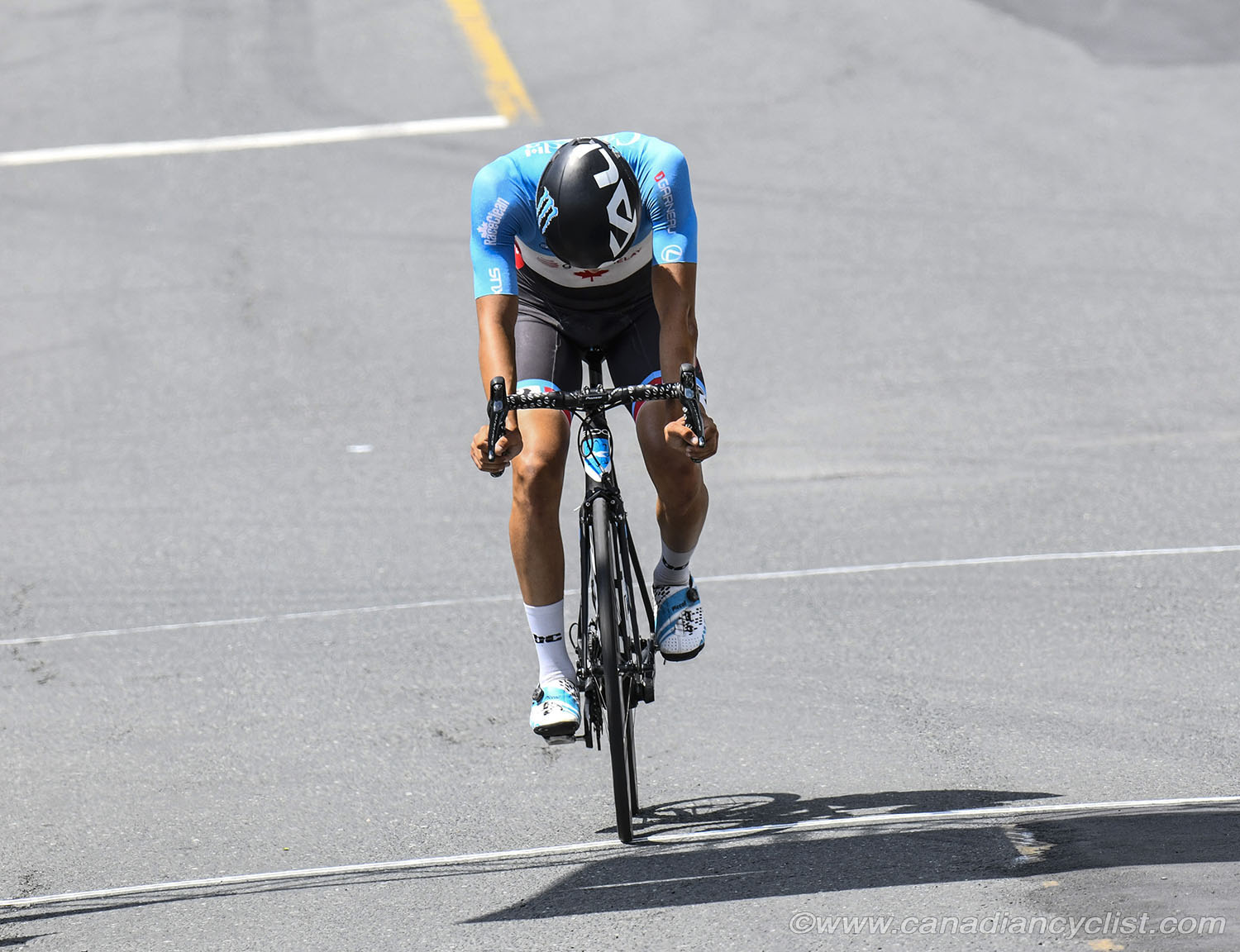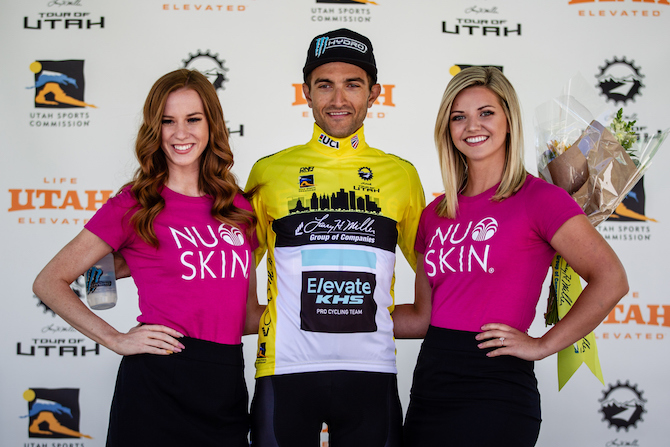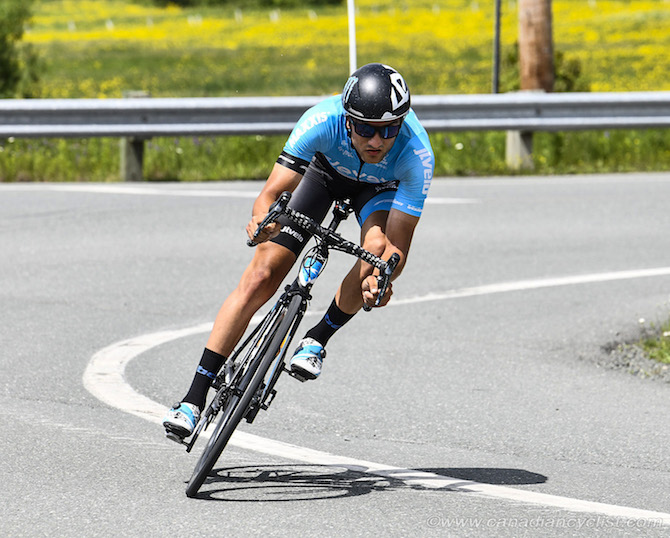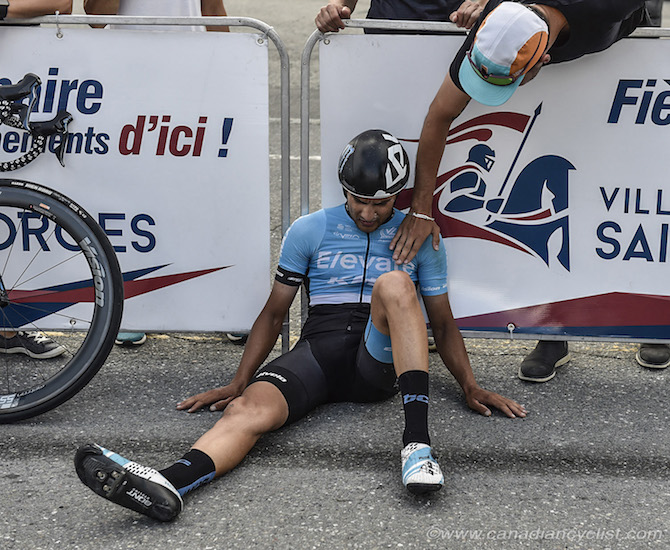Piccoli finds new life at Elevate-KHS
Tour of Utah leader nearly quit cycling before US team called him up




James Piccoli (Elevate-KHS) surprised and impressed a lot of people with his prologue time trial win on Monday at the Larry H. Miller Tour of Utah, but the overnight race leader nearly quit the sport in 2017 after two difficult seasons.
As Piccoli was deciding his fate in July of 2017, Elevate-KHS manager Paul Abrams called the Canadian rider and offered him a spot in the US Continental team for that year's Tour of Utah.
Piccoli accepted the offer and finished 10th overall in the race, infusing him with confidence and breathing new life into his cycling ambitions. This year in Utah, Piccoli has paid back Abram's confidence many times over, taking the team's best result to date and wearing the race leader's yellow jersey during stage 1.
"I think if you look at the development of our team, you could say the same thing about Sam Bassetti, you could say the same thing about Jordan Cheyne, you could say the same thing about George Simpson, about Alfredo Rodriguez," Abrams told Cyclingnews before the start of stage 1 in North Ogden City on Monday.
Although many may have been surprised to see the 27-year-old from the relatively small US team win the prologue and take the race lead, those who have been following the North American domestic circuit this year could have seen the result coming.
Piccoli has proved himself to be on the top stage racers in North America this year, finishing no worse than second in any of the stage races he's entered in 2019 and taking the overall win at the Tour of the Gila in May. That race was also a turning point for Piccoli.
"Gila was the first moment where I really set a goal to win the overall," Piccoli said. "We had a plan and we executed the plan, and that's the way I won. It was textbook. It was quite special, and I think what Elevate does really well is we go into the race with a plan, and then when you do it that way it's cool. It's weeks and months of planning, and then executing it on the road was really cool.
The latest race content, interviews, features, reviews and expert buying guides, direct to your inbox!
"The team said, 'We're going to back you 100 per cent. This is what you need to do.' So I did it, and we came home with yellow," he said.
Abrams and Elevate-KHS are obviously proud of the progress Piccoli has made, but Abrams said the programme is geared toward finding hidden talent and letting the riders blossom.
"We are a team that sits down with our guys and really maps out a plan for each one of them," Abrams said. "We tell them that if they want to move up, these are the steps you have to take, and we can help them take those steps. The guys who embrace that formula do really, really well here, and we're really proud of that progression.
"Almost every race, it's like our best result," Abrams said. "We just keep getting better and better. If you look at James this year, the worst he's done in any stage race is second. There's no doubt in my mind that he's the best rider in North America, and I really expect him to one day make the WorldTour leap and one day be in the Tour."
Moving to the next level and maybe riding the Tour de France one day are off-in-the-distance goals, however, while the Tour of Utah is the current target. If Piccoli survives Monday's stage, which will likely end in a sprint, he'll have to defend the jersey on the daunting climb to the top of Powder Mountain during Wednesday's stage 2.
"It's going to be minutes there, Piccoli said of the gaps he expects at the finish on the ski hill. "I don't want to say the race is going to be decided there, because there's still a lot of racing, and it's bike racing and anything can happen. If you are on a good day, you could potentially take minutes. Everything you can do to make a climb hard, that's Powder Mountain. It's steep, long, at altitude and there's gravel."
Growing up in Missoula, Montana, Pat competed in his first bike race in 1985 at Flathead Lake. He studied English and journalism at the University of Oregon and has covered North American cycling extensively since 2009, as well as racing and teams in Europe and South America. Pat currently lives in the US outside of Portland, Oregon, with his imaginary dog Rusty.